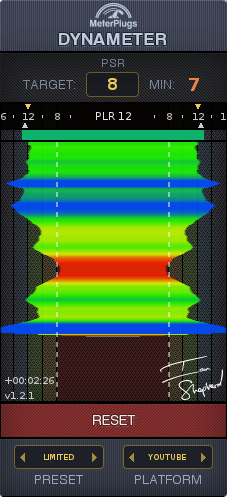Hi guys,
maybe not the right place, but after so many hours of reading, looking you tube movies, I’m even more confussed ![]()
what happens. I read about the EBU scale, loudness maddness etc…
to put it in very simply words…seems not so easy.
after 10 years inactivitiy the complete DAW scene changed a lot for my old brains.
so what do I make, modern music again, (club techno, commercial tracks to be added on movies and publicity tracks).
what I encounter is this : if for example we talk about club techno, we need ofcourse a good solid kick.
when we add this into a cubase track you can see the meter of that channel go red or green.
following what I saw on the internet, I set each meter like in file>perferences>metering>appearance.
the start of bottom green = -12db, the max level for green = -6db and then the red part is -3db.
so the goal is to have an avarage between -12db and not for sure go over the -6db (to have room left for mastering).
I think this is okey, if not, correct me please.
then i setup my mixer (F3) to see the meter master on EBU scale and the loudness at LUFS where we have to aim at 23.
now when I start to add a kick that for me sounds as i wanted it to sound, you see the normal channel meter is set to --6.89dB in order to not touch the red,
then when I look at my master meter, in order not to pass the 23 LUFS I must set teh master slider to -7.91.
but the moment I add the high hats, shakers etc… I first listen without looking at meters, and for what I think they must sound (in loudness) I set the sliders. ofcourse adding more and more channels, the overal total loudness increases.
so that the master slider must be put down again to a -8.99.
I use the UR22MKII to listen with my studio monitors or with my brand new AKG K712Pro headphone.
and there I start to encounter that i must set the volume of the headphone at max and still have the feeling the overal volume is so low.
is my way of working correct?
so to set the complete story above in short :
- every individual meter I set to have a safe green zone between -12.3dB and -6 dB, the red danger zone is between -6dB and -3dB (So I try never to get into the red zone for each track).
- I set my meter to LUFS and try not to go above the 23 LUFS, so to have the left green arrow always be green.
this gives me the consequence that my main stereo out slider must be slide down sometimes to -8.99 (that’s the number you see under the slider on your left (the channel volume) or -11.4 meter peak lvl. then I have much less volume into my headphones, where sometimes I wanted a bit louder for me in order to hear all the details very well.
well, I know I sound as a neewbe, but hey I am ![]() I’m an old guy worked for years with analogue synths
I’m an old guy worked for years with analogue synths ![]()
so working back to all vst’s seems sometime confussion.
And you hear so much different things that makes the complete path even more dificult ![]()
If I start to know that my track sliders are good with the values I use, the meter loudness is correct as I try to aim. then I know that’s the first start to be good to start ![]() .
.
well I thank anybody who has much more experience on this matter and can give me some clue or tip ![]()
ps : don’t judge me on my English, it’s not my home language ![]()
thx a lot in advance.


